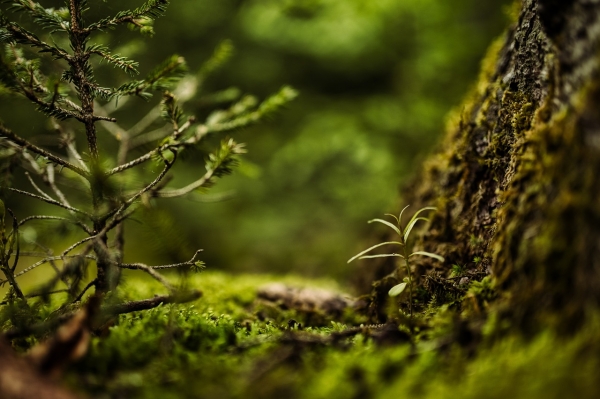Approximately 12,000 species of mosses exist and cover close to four million square miles of earth, equivalent to the size of Canada, and are ecologically and evolutionarily important. Mosses play an essential role in rainwater retention, decreasing plant pathogens and increasing carbon sequestration in soil, thus improving the overall soil health. Mosses also protect long-term carbon storage systems, such as bogs and permafrost. Moss growth is increasingly used in models to improve the accuracy of climate change predictions. However, the impact of key climate variables such as elevated CO2 (eCO2) levels on mosses remains underexplored.
Mosses experience eCO2 levels differently than most land plants. Being small, they grow close to the soil surface, and are exposed to CO2 released due to decomposition of soil organic matter. Thus, mosses are likely exposed to considerably higher CO2 levels than most other plants. Unlike flowering plants, mosses do not use stomata for CO2 entry and therefore may have less access to the available CO2. Consequently, how mosses will respond to eCO2, whether they will benefit from eCO2 and the extent to which their response will differ from other land plants posed important and interesting questions.
A collaborative research team from the Pandey and Allen labs at the Donald Danforth Plant Science Danforth Center addressed these questions and demonstrated that the model moss Physcomitrium patens (P. patens) gains three-fold more biomass in elevated CO2 conditions by adjusting its growth, metabolism and physiology. Their work, Physcomitrium patens response to elevated CO2 is flexible and determined by and interaction between sugar and nitrogen availability, was recently published in the scientific journal New Phytologist. Their results demonstrated that the increase in biomass was due to improved photosynthesis and a delicate balancing of life cycle transition between diffuse and profuse growth depending on nitrogen and carbon availability.
Read more at Donald Danforth Plant Science Center
Photo Credit: MartinPhotography via Pixabay


